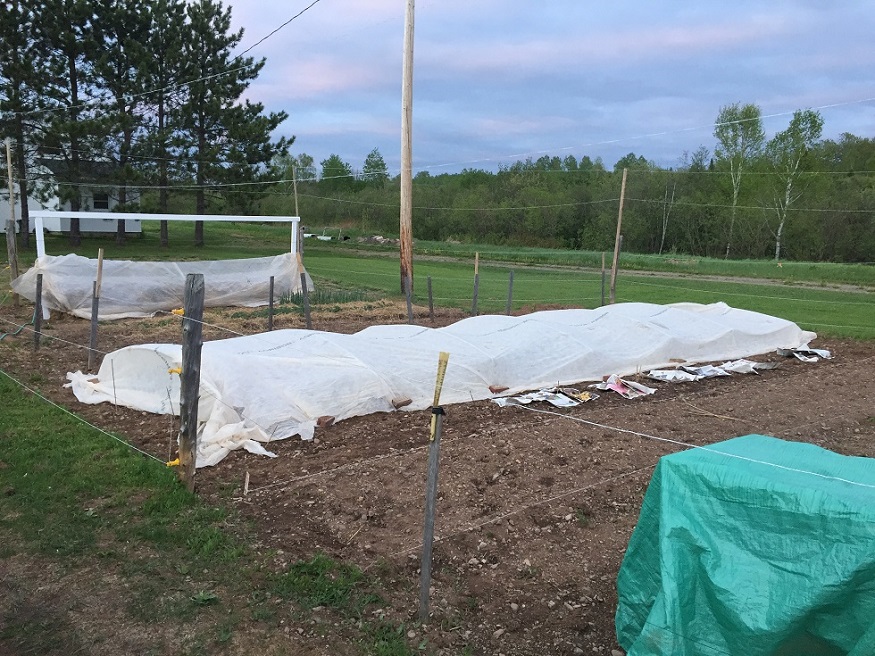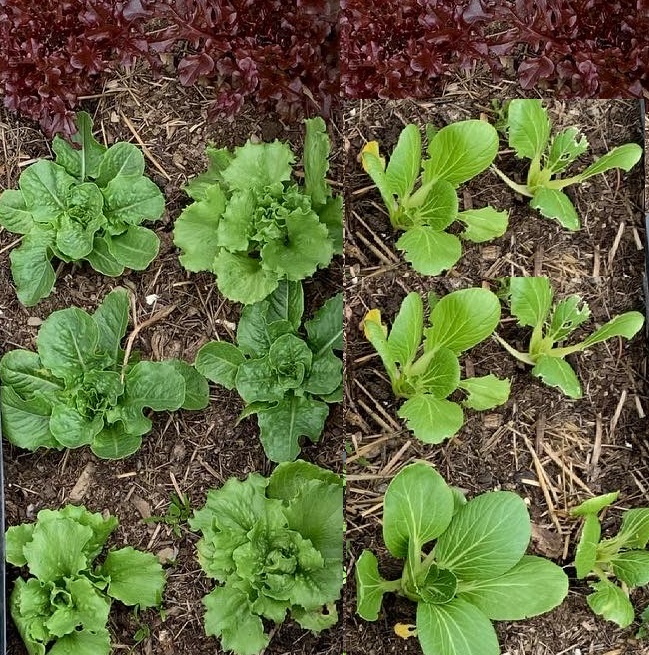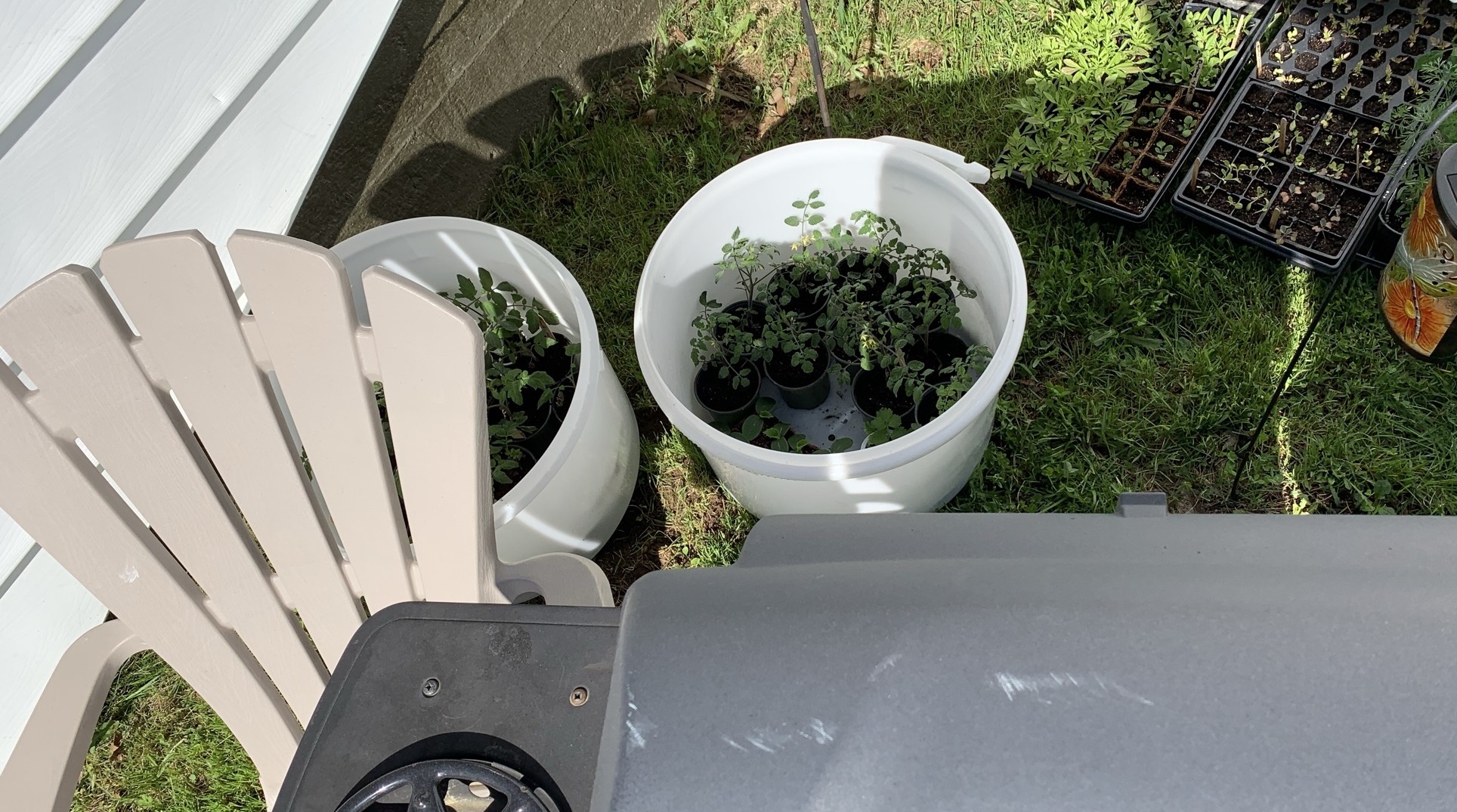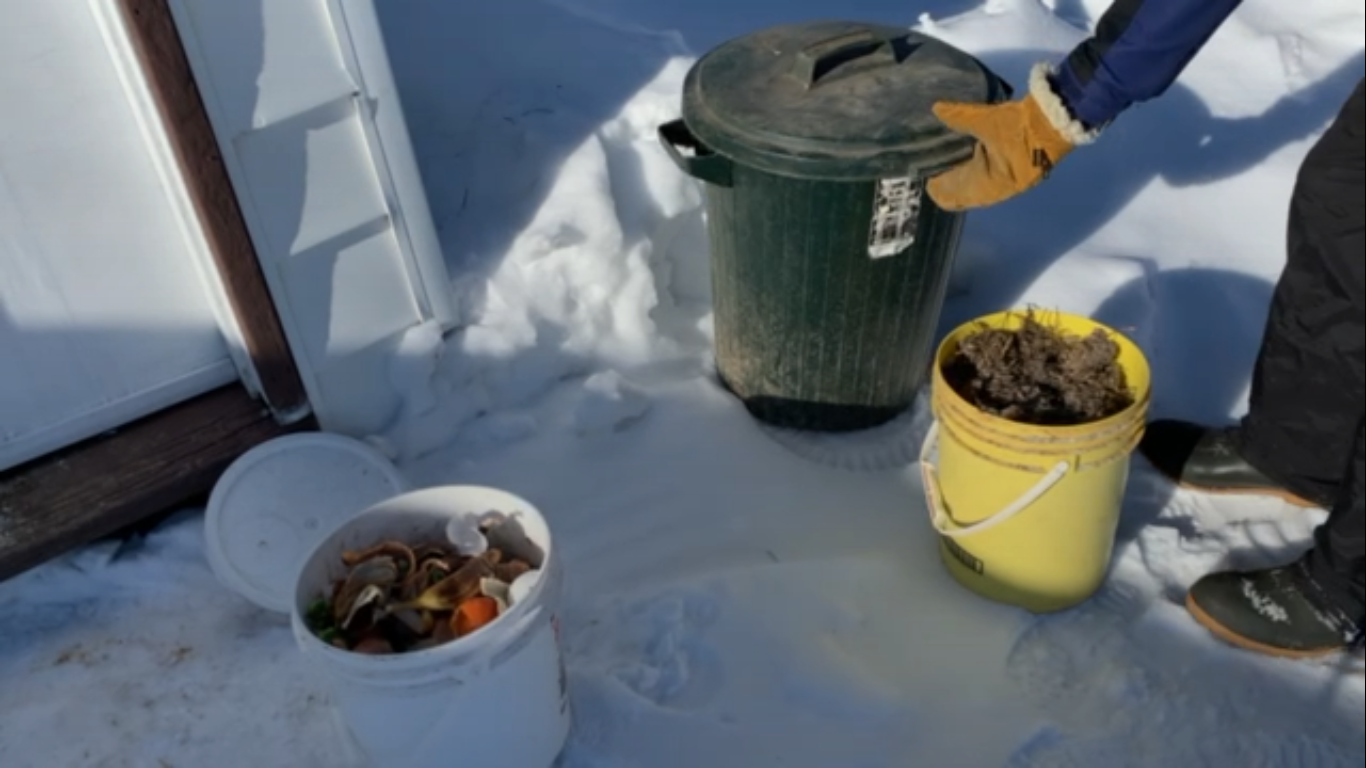Did you know you can extend the
growing season without a greenhouse?
Preparing for June Frost
Extend growing season -- If you live in a hot climate, to you that probably means enjoying your tomatoes, peppers, and melons for a longer period in the cool season of the year. For those of us in the unpredictable short season of the northern zones, however, "extend growing season" can mean just barely getting a crop of some of the heat loving vegetables.
Even for cool weather crops, it is nice to be able to “push the envelope” and get those extra early peas, spinach, and beet greens; especially if you have a table at your local farmer’s market. Obviously, if you have the luxury of a heated greenhouse, you can extend your growing season to year-round, even in the northern most zones.
The good news is that there are many tricks and tips to push the envelope without a greenhouse. Here a few basic ways to make your growing season longer at both ends.
One of the most obvious ways to extend the growing season is to either start your seeds indoors or buy plants at your local nursery.
Of course some plants such as corn and carrots don’t transplant well and need to be direct seeded outdoors. Other plants such as lettuce, broccoli, or cucumbers can be direct seeded fine, but you can get an earlier crop if you start with transplants.
If you live in a northern latitude, don’t try to direct seed your tomatoes or peppers outdoors or you won’t have a crop.
If you’re new to gardening and want to keep things simple, you may want to buy your transplants at your local nursery, since starting seeds indoors can be quite involved. If you do start your own plants indoors, you need to check out the last frost dates for your area, and be aware of proper lighting techniques, avoiding damping off, and other issues that affect indoor growing.
Whether you start your own plants or buy them, you will want to harden them off gradually by exposing them more and more to outside conditions each day. You will also need to plant them on an overcast day. If your transplants get off to a poor start, they can be overtaken and passed by plants that were started outdoors directly from seed.
Winter Sowing (Milk jug gardening)
"Extend growing season" takes on a new meaning with milk jug gardening. This is a fun way of winter sowing your cold loving plants early outside while there is still snow on the ground. You can literally start some cold hardy seeds in milk jugs or other plastic containers out in the snowbank and enjoy the produce in the wintertime.
Soaking, inoculating, and green sprouting for faster germination
You can speed up the germination of your seeds by soaking them overnight before planting. Yields from peas and beans can be increased if you soak the seeds in garden inoculant. (You only want to try this if you are hand-planting your seeds. Wet seeds will gum up a mechanical seeder.)
Potato tubers can be green sprouted indoors to give them an extra jump if you want new potatoes in early July.
Extend growing season by providing frost protection
Seed catalogs offer myriads of mini-greenhouses, cloches, and popups to protect your plants from frost but you can easily build your own cold frame with a simple wooden frame and an old window or sheet of plastic. You can also build your own low tunnels or high tunnels by purchasing electrical conduit, bending it to shape, and covering it with plastic.
Light weight floating row covers also offer protection from that surprise light frost in late May, early June or late August, early September.
Spraying for frost
If a light frost catches you off guard and your plants aren’t covered, take your water hose and spray the plants just as the morning sun is coming over the horizon to thaw out the frost before the sun cooks your frost sensitive plants. Don’t spray them too early, or the frost will refreeze and do even more damage.
Ripening and curing off the vine
Inevitably, if you live in a cool climate zone, you can only extend the growing season so long without a hoop house and you may find that you have to harvest your tomatoes or squash before you would like. Don’t lose heart. You can easily ripen your tomatoes or cure your squash off the vine.



